Vendor Hobbies


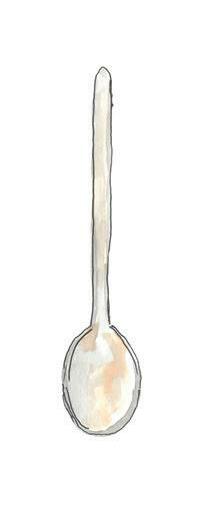























‘Contributor’ vendors share what they do when they’re not working



































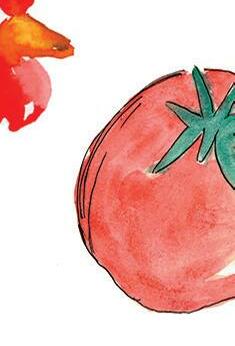



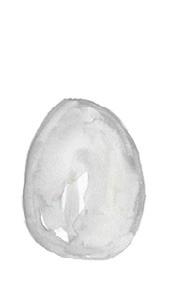






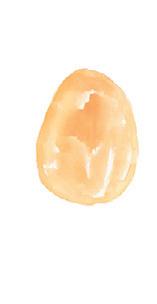
















































‘Contributor’ vendors share what they do when they’re not working





































































Congregants from the Downtown Presbyterian Church have been cooking up holiday Waffles for the last 95 years.
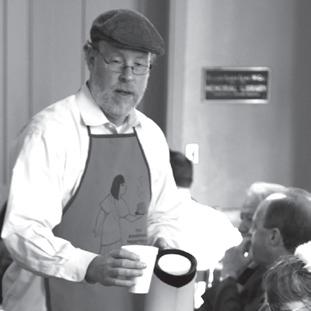
Poverty and the Arts and Urban Housing Solutions are partnering to provide art to people when they move into housing..
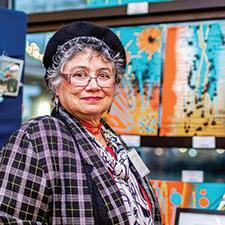

Tacky and wacky, Hairspray can still hold an audience. See it Monday, Nov. 11 at The Belcourt’s Music Monday series.



Our vendors write in this issue about getting the call, making excuses, giving thanks, and Julie answers a reader’s question.

Cathy Jennings, Chair Tom Wills, Bruce Doeg, Demetria Kalodimos, Ann Bourland
Linda Bailey
• Amanda Haggard • Tom Wills • Hannah Herner • Kara Hartnett
• Joe Nolan • Mr. Mysterio • Ridley Wills
II • Alvine • Uncle Jeni • Jackie S. • Gary E. • Wild Bill • Eric H. • Michael W. • Victor J. • Vicky B. • Julie B. • John H. • Cynthia P.






Cathy Jennings • Tom Wills • Joe First
• Andy Shapiro • Michael Reilly • Ann Bourland • Patti George • Linda Miller •
Deborah Narrigan • John Jennings • Barbara Womack • Colleen Kelly • Janet Kerwood • Logan Ebel • Christing Doeg • Laura Birdsall
• Nancy Kirkland • Mary Smith • Andrew Smith • Ellen Fletcher • Michael Chavarria
Will Connelly, Tasha F. Lemley, Steven Samra, and Tom WIlls Contributor Co-Founders
Editorials and features in The Contributor are the perspectives of the authors.
Submissions of news, opinion, fiction, art and poetry are welcomed. The Contributor reserves the right to edit any submissions. The Contributor cannot and will not endorse any political candidate. Submissions may be emailed to: editorial@thecontributor.org


Requests to volunteer, donate, or purchase subscriptions can be emailed to: info@thecontributor.org Please email advertising requests to: advertising@thecontributor.org






Mailng Address

The Contributor P.O. Box 332023, Nashville, TN 37203
Editor’s Office: 615.499.6826 Vendor Office: 615.829.6829

Proud Member of:




Printed at:

Follow The Contributor:
Copyright © 2018 The Contributor, Inc. All rights reserved.

The paper you just paid for was bought by someone else first, otherwise it wouldn’t exist. That’s how The Contributor works. A vendor who experienced homelessness paid 50 cents for this paper and then sold it to you. By buying it and taking it with you, you’ve just encouraged that vendor to buy another. BOOM! That’s the solution. Now keep reading. This paper has something to say to you.
Street papers provide income for the homeless and initiate a conversation about homelessness and poverty. In 2007, The Contributor founders met at the Nashville Public Library downtown to form one. In a strike of lightning we named it The Contributor to infer that our vendors were “contributors to society,” while their customers could contribute to their work. But, thunder from lighting is always delayed … It took three years, but Nashville embraced us like no other city in the world. The Contributor became the largest selling street paper per-capita on the globe. And today 50 percent of our six months or longer tenured vendors have found housing. BOOM! The thunder has struck.
The Contributor is a different kind of nonprofit social enterprise. We don’t serve meals or provide emergency shelter. We don’t hire people in poverty to create products or provide a service. Rather, we sell newspapers to homeless people who work for themselves. We train them to sell those papers to you, keep the money they earn, and buy more when they need to replace their stock.
Our biggest fans don’t always get this. Like lightning without the thunder, they see the humanity of the vendor but misunderstand the model. Case in point: In 2013 during a funding crunch, a representative of one of Nashville’s biggest foundations exclaimed, “I’m such a big fan that I never take the paper!” We responded, “Well, that’s why we are in a funding crunch.” BOOM! Thunder was heard. Taking the paper makes our model work — not taking it breaks it. And selling the paper twice doesn’t just fund the paper, it funds housing and change. BOOM! Our vendors report their sales to qualify for subsidized housing and even for standard housing deposits and mortgages. They don’t consider your buying the paper a “donation.” It is a sale. When they sell out, they buy more and build the paper trail of a profitable business. Until making these sales, many of our vendors had never experienced the satisfaction of seeing their investment pay off. And when it does, it liberates! They have become “contributors” to their own destiny. And Nashville has become a city of lightning and thunder. BOOM!
Now that you are a SUPPORTER , become an ADVOCATE or a MULTIPLIER You are already a SUPPORTER because you know that taking the paper makes the model work. You bought the paper and you are reading it. Now your vendor is one copy closer to selling out, which is exciting! Now you can become an ADVOCATE when you introduce your friends to your favorite vendor, follow us and share our content on social media, contact us when you witness a vendor in distress or acting out of character, or explain why others should pick up a copy and always take the paper when they support a vendor. And, you can become a MULTIPLIER when you advocate for us AND directly donate to us or become an advertiser or sponsor of The Contributor. Our income stream is made of 50-cent- at-a-time purchases made from our vendors, matched by contributions, ad sales and sponsorships from multipliers like you. Because our vendors are business owners, your donations are seed-money investments in their businesses and multiply in their pockets. Every donated dollar multiplies four-to-seven times as profits in the pockets of our vendors. Thanks for contributing.
El periódico que usted acaba de pagar fue primeramente comprado por alguien mas, de otra manera no existiría. Así es como funciona The Contributor. Un vendedor que está sin hogar pagó 50 centavos por este periódico y después se lo vendió a usted. Al comprarlo y llevarlo con usted, usted animo a este vendedor a comprar otro. BOOM! Esa es la solución. Ahora continúe leyendo. Este periódico tiene algo que decirle. Los periódicos vendidos en la calle proveen ingresos para las personas sin hogar e inicia una conversación sobre lo que es la falta de vivienda y la pobreza. En el 2007, los fundadores de The Contributor se reunieron en una librería pública en Nashville para formar uno. Y como golpe de un rayo, le llamamos The Contributor para dar a entender que nuestros vendedores eran “contribuidores para la sociedad,” mientras que los consumidores podrían contribuir a su trabajo. Pero, el trueno siempre tarda más que el rayo. Nos llevó tres años, pero Nashville nos acogió como ninguna otra ciudad en el mundo. The Contributor se volvió uno de los periódicos de calle más vendido en el globo. Y hoy el 50 por ciento de nuestros seis meses o más de nuestros vendedores titulares han encontrado casa. BOOM! Ha llegado el trueno.
JENNINGSThe Contributor es una empresa social sin fines de lucro muy diferente. Nosotros no servimos comida or proveemos alojo de emergencia. No contratamos gente en pobreza para crear productos or proveer un servicio. En vez, nosotros vendemos periódicos a las personas sin hogar para que ellos trabajen por ellos mismos. Nosotros los entrenamos como vendedores, ellos se quedan el dinero que se ganan, y ellos pueden comprar más cuando necesiten reabastecer su inventario.
Nuestros mas grandes aficionados no entienden esto. Como un rayo sin trueno, ellos ven la humanidad de el vendedor pero no comprenden el modelo. Un ejemplo: En el 2013 durante un evento de recaudación de fondos, uno de los representantes de una de las fundaciones más grandes de Nashville, exclamó: “Soy un gran aficionado, y es por eso que nunca me llevo el periódico.” Al cual nosotros respondimos: “Y es por esa razón por la cual estamos recaudando fondos.” BOOM! Y se escuchó el trueno! El pagar por el periódico y llevárselo hace que nuestro sistema funcione, el no llevarse el periódico rompe nuestro sistema. Y el vender el papel dos veces no da fondos para el periódico, pero da fondos para casas y causa cambio. BOOM! Nuestros vendedores reportan sus ventas para calificar para alojamiento subvencionado y hasta para una casa regular, depósitos e hipotecas. Ellos no consideran el que usted compre el periódico como una “contribución” pero más lo consideran como una venta.
Cuando se les acaba, ellos compran mas y asi logran establecer un negocio rentable. Hasta que lograron hacer estas ventas, muchos de nuestros vendedores nunca habían experimentado el placer de ver una inversión generar ganancias. Y cuando logran hacer esto, da un sentido de Liberación! Ellos se han vuelto contribuidores de su propio destino, y Nashville la ciudad de el trueno y el rayo. BOOM!
Ahora que te has vuelto nuestro SEGUIDOR, vuelve te en un ABOGADO o un MULTIPLICADOR. Ya eres nuestro SEGUIDOR, porque sabes que al llevarte este periódico sabes que esto hace que nuestro modelo funcione. Compraste el papel y lo estas leyendo. Ahora nuestro vendedor está a una copia más cerca de venderlos todos. Que emoción!
Ahora que te has vuelto nuestro ABOGADO cuando presentes a tus amigos a tu vendedor favorito, siguenos y comparte nuestro contenido en social media, contactanos cuando seas testigo de un vendedor actuando de manera extraña o fuera de carácter. O explicale a tus amigos porque ellos deben de llevarse el periódico cuando ayuden a un vendedor.
Te puedes volver un MULTIPLICADOR cuando abogues por nosotros, Y directamente dones a nosotros o te vuelvas un anunciador o patrocinador de The Contributor. Nuestra fuente de ingresos consiste en ventas de 50 centavos hechas por nuestros vendedores, igualadas por contribuciones, venta de anuncios, y patrocinios de multiplicadores como usted. Porque nuestros vendedores son dueños de negocios, las donaciones que den son dinero que es invertido y multiplicado en sus bolsas. Cada dólar donado se multiplica de cuatro a siete veces en la bolsa de nuestros vendedores.
Gracias por Contribuir.
MNPS’ Catherine Knowles honored as Homeless Liaison of the Year
The National Association for the Education of Homeless Children and Youth has awarded their Homeless Liaison of the Year Award to Catherine Knowles, Homeless Education Program Coordinator of Metro Nashville Public Schools. Knowles will receive this honor during the 31st Annual NAEHCY Conference on Nov. 3-5, 2019, at the Washington Hilton in Washington, DC, according to a press release.
Knowles has been the Homeless Education Program Coordinator of Metro Nashville Public Schools for more than two decades. During that time, The HERO Program for Families in Transition has grown from serving 200 students a year to more than 3,400.
She has recruited more than 25 community partners who support her McKinney-Vento Program and she currently serves on three state-wide councils under appointments from the Governor as a service provider representing the concerns of families who are experiencing homelessness. She is a member of the Metropolitan Nashville Homelessness Planning Council, the Youth Homelessness Demonstration Project Steering Committee, and Vice President of Unicycle — a local non-profit that provides gently used school clothing to students throughout her district of 86,000 students.
After 22 years, “Knowles maintains her energy and commitment to her work by pursuing new ways to broaden the reach of her program,” the release read. One of her most recent endeavors has centered around working with the Tennessee State Legislature to pass new laws designed to support youth and young adults. She has also partnered with Purposity — a non-profit organization with an app and text messaging platform that connects community donors with the direct needs of students and families.
In Nashville, the event is meant to demonstrate solidarity and increase public awareness of the urgent need for shelter and housing in the city, according to a release.
“As of today, our city government is still finalizing an emergency overflow shelter program, leaving many of the city’s most vulnerable in need of immediate shelter as temperatures drop,” the release reads. “Already, this has created an additional burden on the organizations around the city that provide warmth, food, and safety to this population.”
In order to participate, individuals and organizations can register online and bigsleepout.com — the site will provide materials and more details.
Safe Haven to host 15th annual Hike for the Homeless
Safe Haven Family Shelter is slated to hold its 15th Annual Hike for the Homeless on Nov. 9.
“We are thrilled to support Hike for the Homeless and Safe Haven Family Shelter again this year,” said Linda and Mike Curb of Curb Records. “Safe Haven’s tireless efforts to keep families together, all while providing the tools needed to secure housing and create long-lasting stability, are unmatched.
Hike for the Homeless is crucial to advancing Safe Haven’s life-changing work, and we are honored to be a part of the event.”
Through Hike for the Homeless, Safe Haven is working to raise $150,000 through teams, individuals and event sponsorships. Funds raised from the Hike for the Homeless will help contribute to Safe Haven’s goal of serving 300 families in 2019.
On Dec. 7, 2019, Nashville will join 60 cities around the world in the World’s Big Sleep Out, an event to raise awareness and money for people who are homeless.
The event will take place at Edwin Warner Park’s picnic shelters 9 and 11. Registration begins at 9 a.m., with the Hike starting at 10 a.m. The event includes hiking on two paved trails (2.2 and 3.1 miles), complimentary food, face painting, an inflatable obstacle course, climbing wall, live music, a dog fun zone and more. There is no entrance fee or minimum donation. Participants are encouraged to create teams or hike as individuals. Hikers who donate $25 or more will receive a free T-shirt. To register or to learn more, please visit www. hike4homeless.org.
WE’RE HONORED TO SUPPORT THE CONTRIBUTOR AND TO CHAMPION GOOD NEWS IN NASHVILLE.
The Waffle Shop began in about 1925 when the women of the church at First Presbyterian put on the event at the beginning of the Christmas season. Earlier called the Christmas Bazaar and Waffle Shop, it became a tradition at First Church and continued to be held annually through 1954, the last year that the church was located downtown on 5th Avenue North.
Because the Downtown Presbyteriuan Church, founded in 1955, assumed responsibility for the historic downtown building, it also assumed responsibility for continuing the Waffle Shop, which benefits the homeless and the poor in the city’s center. One of the women at
the Downtown Presbyterian Church who provided early leadership in putting on the Waffle Shop was Mary Thompson (Mrs. Sam) Orr. She brought down with her her cook, Katherine Douglas.
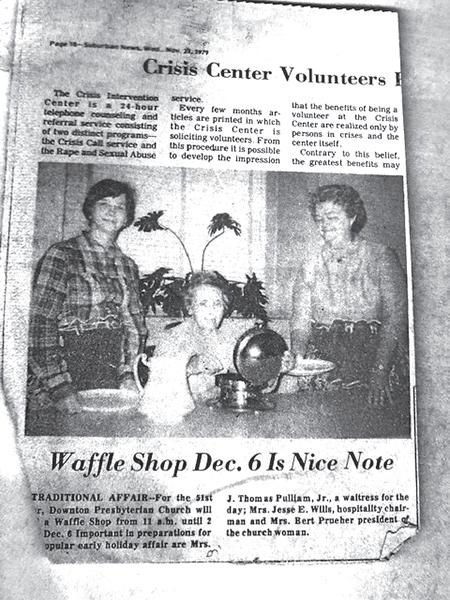
Thirty-seven years later, in the early 1990s, when Katherine was 84 years old, and still cooking waffles, she reflected on the many years she had cooked waffles at the church. The recipe that we still use was hers. Here it is. “For each batch, use two dozen eggs, a pound of flour ‘mixed with a little salt and baking powder;’ a gallon of milk, and ‘I have been using 2 ½ cups of vegetable oil for the past three years and it works out beautifully.” Katherine said
the recipe makes more than 50 waffles.
Avondale Rawls, who served as docent at Downtown Presbyterian for many years, called Katherine “a fixture” at Downtown Presbyterian, and added that “she comes in on Monday and gets everything going. and that’s it.”
In the 1960s, the Waffle Shop, traditionally held from 10 a.m. to 1:30 p.m. on the first Thursday in December, cost a customer $3. For that, you got one of Katherine’s wonderful waffles and either sausage or turkey hash. Gradually, the price has increased to $10 and a couple of years ago we substituted hot chicken for the sausage or turkey hash.
The crowd size has remained rea -
sonably constant with 600 or 700 served annually with many regulars who have come annually for two decades.
For the past several years, Denny Harris and Mary Taylor have co-chaired Waffle Shop, which continues to be supported by members and clergy from First Presbyterian. For many years, Waffle Shop has included bake goods, books and crafts for sale.
We are grateful for the community’s long-standing support and encourage anyone to come for our 95th annual Waffle Shop on Thursday, Dec. 5, 2019. As the church’s biggest crowds come between 11 a.m. and 11:45, a suggestion is that you come either a little earlier or a little later.
That National Health Care for the Homeless Council wrote a letter to TennCare deputy commissioner and director Gabe Roberts condemning the proposal to convert federal Medicaid funding into a modified block grant, stating that the amendment will incentivize cutting costs to a system already failing to provide care for a large portion of the state’s homeless community.
The letter, signed by the group’s chief executive officer, G. Robert Watts, said that while many of their patients are already uninsured, the proposal would give the state more financial incentive to limit the amount, duration and scope of core benefits for those who do have coverage. For patients experiencing homelessness, he continued, access to health care is essential in subduing pre-existing diseases and the spread of contagious illnesses within the community.
“To focus on cost-cutting within the Medicaid program while our patients suffer irreparable damage due to a lack of Medicaid coverage is not in the best interests of Tennesseans, and may have deadly consequences for the most vulnerable people,” Watts wrote in the letter.
Gov. Bill Lee and Roberts have verbally promised enrollment and plan benefits will not be cut or reduced under the proposed model, while simultaneously asking to be exempt from federal regulations that enforce those standards, but have yet to write that commitment into the amendment.
The team drafting the proposal says the model will result in nearly $2 billion worth of savings to be split with the federal government 50-50 based on the difference between CMS per-capita spending projections and TennCare expenses in any year. Stakeholders have criticized the the savings model, claiming the only way to save money within the state Medicaid system is to cut benefits or skim provider reimbursement which already runs significantly lower than commercial rates.
There is also worry about the state putting itself in a position of financial risk. Rising costs and other factors could result in per-capita spending being higher than projected, and Tennessee would have to front the difference — but that scenario doesn’t align with current spending trends.
“Even if expenses increased in any year, sizable savings will still be generated because
the projected expenditures will be inflated in each new year by an amount that is, generally, higher than the annual inflation that TennCare experiences each year,” Division of TennCare Deputy Director of Communications Sarah Tanksley told The Contributor in an email. “TennCare’s actual expenses have been compared to this CMS projection every year for more than a decade. In that time, Tennessee has underspent that projection by billions of dollars, which means we have saved billions for the federal government.”
That money, if available, could go toward population health initiatives, rural hospital recapitalization and, in time, perhaps expanded dental coverage. Lee has promised to reinvest funds back into the TennCare program and not use them anywhere else in the state budget, but again, that commitment has not made its way into the amendment. The fund would also be able to ac-
cumulate savings over time, much like the $732 million in federal grant money meant for low-income families the state has been sitting on for “when the needs are there.”
But reinvested savings into TennCare doesn’t help individuals who have been excluded from the system in the first place. Individuals experiencing homelessness often suffer from high rates of behavioral health conditions and chronic illnesses. Having access to the full system of care allows patients struggling to provide themselves a basic standard of living connect with community services to aid them in their health and address social determinants contributing to it.
The block grant would be calculated through enrollment — and in a state where Medicaid cuts are consistently headlined — critics are concerned marginalized populations like the homeless community will not be considered eligible, thus excluding their
existence and need when determining the grant sum. The proposal wouldn’t expand eligibility to the homeless community, the argument goes, but Medicaid expansion does.
In states that haven’t expanded medicaid, 69 percent of patients at HCH projects lack health insurance in 2015. The 30 states that had expanded their state Medicaid program by that year had an uninsured population of almost half of that — 37 percent. In 2018, the HCH provided care to nearly 19,000 patients experience homelessness between its seven federal funded programs in Tennessee. Of these patients, approximately 60 percent were uninsured, and 20 percent were enrolled in Medicaid.
“We hope that the state of Tennessee will invest in health care by expanding Medicaid to all low-income Tennesseans and forgo the dangerous and ill-advised approach of Amendment 42,” Watts wrote.

When someone is moving into an affordable housing unit, having art for their walls is a wish list item that might fall by the wayside in favor of furniture or kitchen supplies.


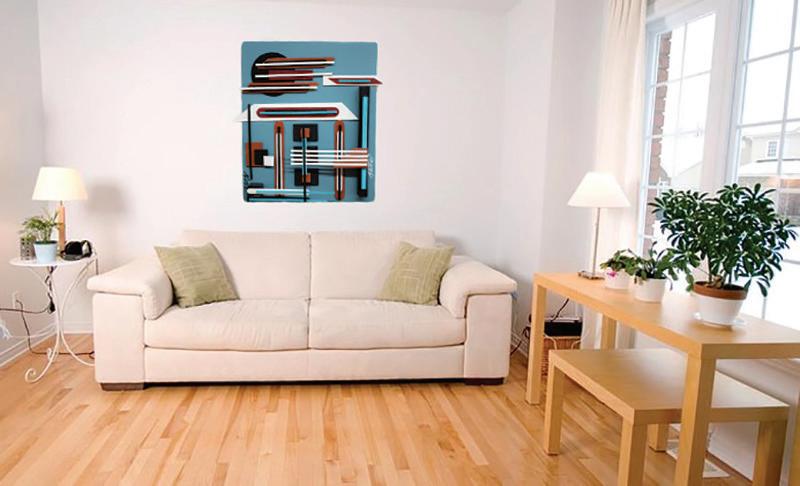
Poverty and the Arts and Urban Housing Solutions are teaming up to make sure new residents have a piece of art to make their home feel like a home.
The Shared Walls Art Pro -
gram (SWAP) asks for a $500 sponsorship from a company, individual or group. With that money, the sponsor will receive an original piece from a Poverty and the Arts (POVA) artist valued at $250, and another piece valued at $250 will be given to someone moving into a home with Urban Housing Solutions. Both parties will be able to pick a piece from the POVA gallery
space or online inventory to fit their own taste.The artists will receive 60 percent of the money from the sale of their art.
POVA equips artists experiencing homelessness and poverty with supplies, studio space, and opportunity to exhibit and sell their pieces. Urban Housing Solutions is Nashville’s largest nonprofit provider of affordable housing.

Nicole Minyard, founder and executive director of Poverty and the Arts says the missions of the two organizations align.
POVA sees the importance of affordable housing as many of the artists experience homelessness, and Urban Housing Solutions shows commitment to the importance of art through offering artist priority waiting lists on some of its new builds.
Minyard says this program is born out of the belief that art is for everyone, regardless of income level.
“Owning and hanging art creates a sense of warmth and belonging in any space, and we believe that it should be available to everyone,” she says.
Interested in being a sponsor? Email creative@ povertyinthearts.org.
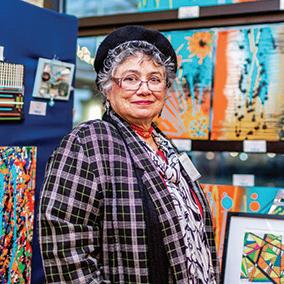








Keith D. had saved some bread to give to “the kids.” That’s how he greets the chickens who live in his yard. It’s part of his evening routine after selling The Contributor, along with tending to his garden.

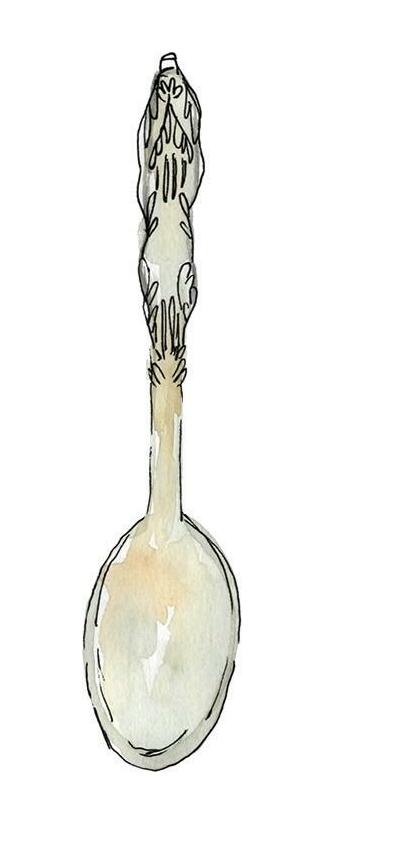
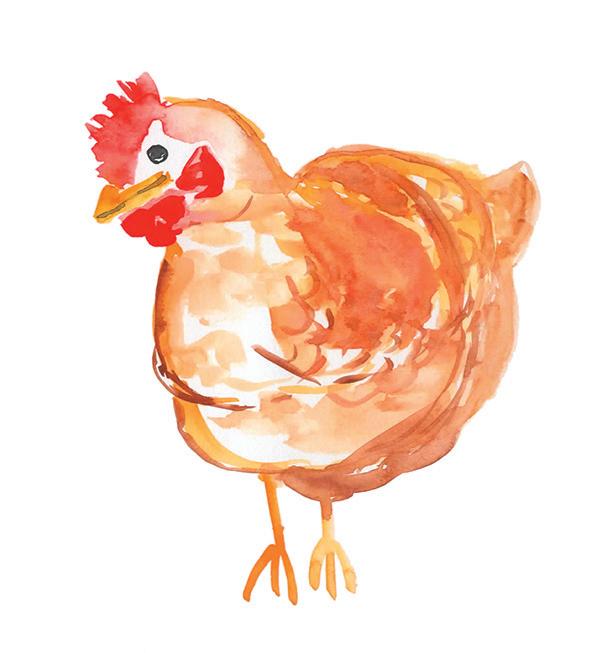
This season Keith gave out between 120-and-140 pints of cherry tomatoes. He gives to customers, Contributor staff and volunteers, and a local low-income retirement home. Overall, he estimates that he gives away 80-to85 percent of what he’s grown.
“I like to share,” he says. “When I give away the tomatoes, whatever’s runt-y I keep for my-

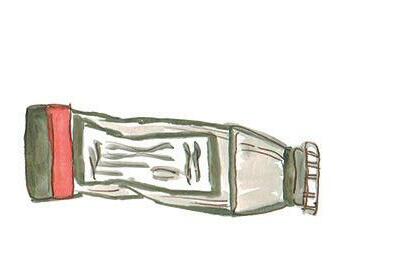
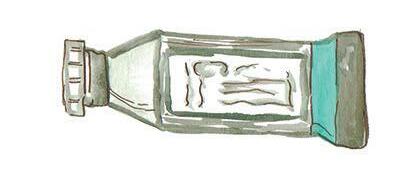








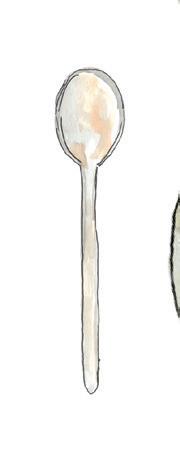







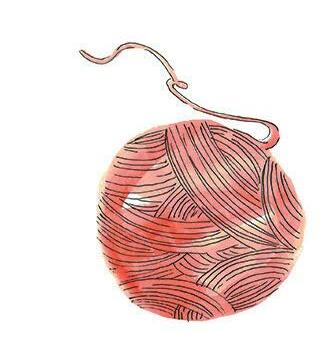





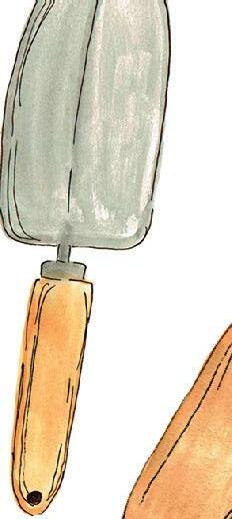





self. When I’m giving it to somebody I want to give my best.”








But he’s keeping one of his proudest accomplishments, Zuc-zilla, an overgrown zucchini he harvested. Th at one will be saved for seeds for next season.
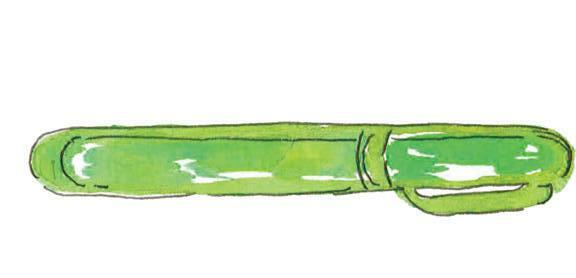



Keith is driven to tend to the garden and chickens to help out his friend and landlord, who tills the land and owns the chickens. He draws from experience helping his grandmother in her garden when he was a child, and loves to watch gardening shows. He also thinks that as long as he’s able to do the work, he should do

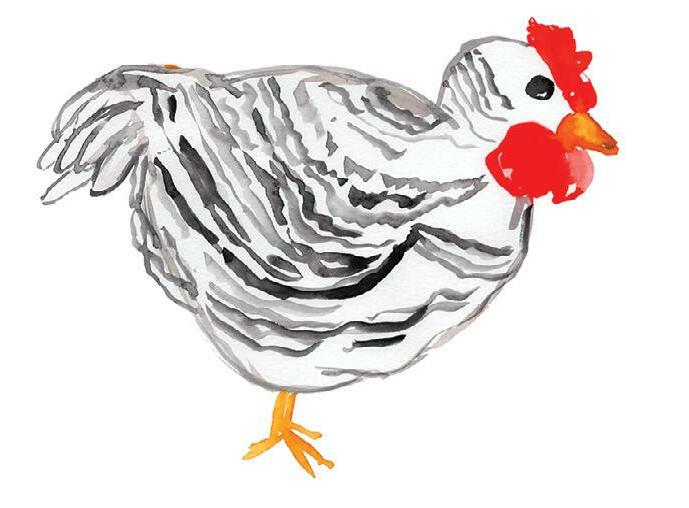
it in honor of those who can’t.



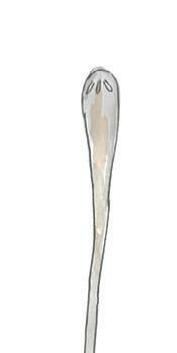



“That’s my main reason for gardening. I know other people can’t garden,” Keith says. “I’d say most of the stuff I give away goes to older people who used to be able to garden and can’t anymore. Most of the stuff I give away goes to people who really appreciate it. I’m making somebody a little better. Th at makes sweating and getting bug bit worth it.”
Keith likes to plant his produce closer together than advised. He wants a wall of tomatoes, a lush bed of greens. He said he wants to look out at his yard and feel like Kevin Costner — to see a field of dreams.


‘Contributor’ vendors share what they do when they’re not workingKeith D.



Norma B. doesn’t do drugs, she does rugs, she says. Creating latch hook rugs has been a hobby for Norma since she was 11 years old. She only has one to show as an example, because she’s given them all away as gifts — designs with teapots, hearts and flowers have gone to loved ones for various occasions.
Norma remembers a huge rug she gave to somebody that took hours and hours to make. The recipient said, “that’s nice.” And they

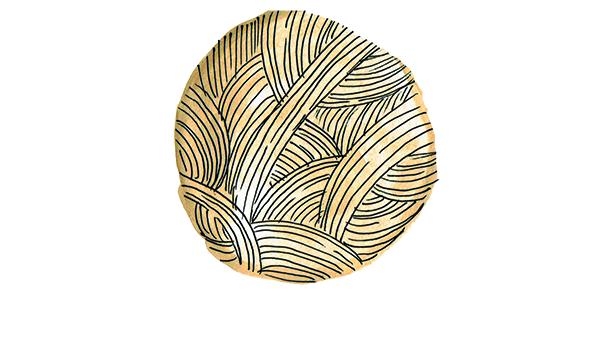
never displayed it. She’s slowed down on the rug-making since then.
“Somebody said, ‘Why don’t you sell this instead of the paper?’ Each of these rows is 45 minutes to an hour, and there’s hundreds of them. I could never sell it for what I got in it, but this is a great stress reliever,” Norma says.
Norma says the sign of a successful rug is when you flip it over and it looks nice and neat, almost as pretty as the front. The
things that stand in the way of her rug-making are having enough money for a kit and finding a design she likes. What Norma likes about making latch hook rugs is anyone can do it. She even taught her granddaughter, now 11 years old.
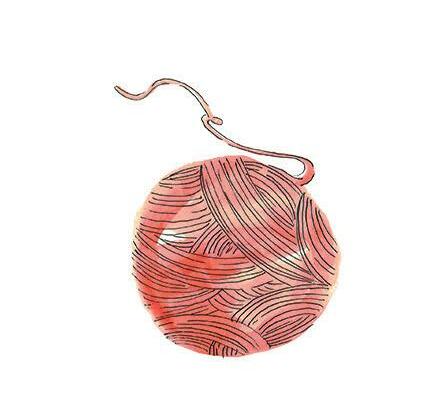

“She was like, four years old, and I was like ‘All you do is you stick the hook in and you wrap it around and you pull it through,” she says. “I mean, it’s not exactly rocket science.”



William “Spoon Man” B. started playing the spoons when he was just eight years old. As a child, he was in the hospital for an extended period of time. An older patient showed William how to play spoons, and pulled another set out of his pocket to give to him.
“I was a quick learner. He said ‘You know what? You’ve got beginner’s luck. You have got the talent to play spoons,’” William says.
William says the man who taught him to play spoons wasn’t
cial place in his heart for him.

“To this very day I love that man for teaching me what he taught me. He gave me a gift,” William says.

Holding the spoons is kind of like holding chopsticks — you hold one tightly and the other more loosely. William customizes the pairs himself, taping them in a way that makes them easier to play. In the past, he’s taught a spoons class at Room In The Inn, and is always up for an impromptu

lesson. He likes that playing spoons brings him people to talk to.
“No matter where I am, if I feel like playing the spoons and singing, I do it.” He recently did a performance at Dollar Tree, and he’s always playing along to rock music when he’s out selling the paper.

Throughout his life, playing the spoons has remained a constant through physical and mental trauma.


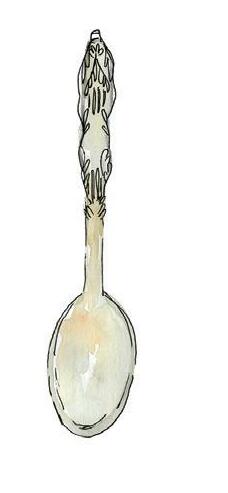



“This is my best medicine,” William says.
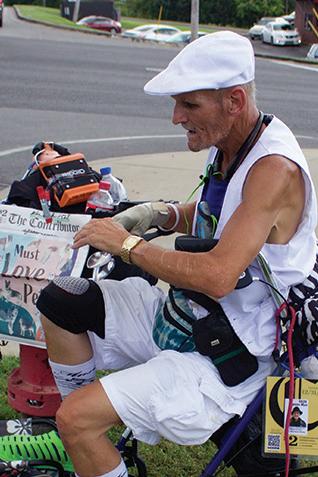
so after the artist, Picasso. I admire him, his works, and



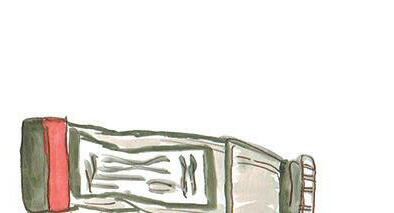

his works are highly similar to mine. At some point I’m going to be doing faces that are my version of a Picasso face. But they’re not going to be called a ‘Picasso face.’ They’re going to be called a ‘Clinecasso face.’”




Around The Contributor office, and most likely the greater Nashville area, David C. is rarely called by his given name. He’s made a new identity with his colorful permanent marker drawings of faces, houses, landscapes and






kaleidoscope-esque abstract pieces. Each piece is given a zany name, like “Mr. Squiggly going crazy” or “WHAM!” or “Spooky Skull.”
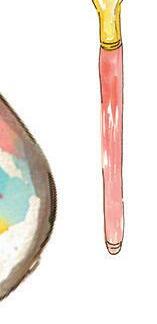
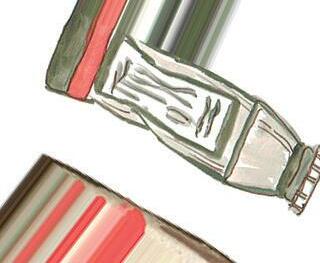
David and his wife are both involved in Poverty and the Arts, a local nonprofit that gives artists experiencing homelessness and poverty arts supplies and the opportunity to sell their pieces for income.
In his youth, David didn’t gravitate toward art, but gained confidence in his artistic abilities in his 30s.
“I tried art class as a freshman in high school and I didn’t understand it because I really didn’t


like the color wheel,” David says. David deals with ADHD and bipolar symptoms, and says working on his pieces is therapeutic.

“It helps me with my disability, it helps me with my mental condition, it helps me calm down,” he says. “When I do art, it calms down the hyper-activity.”
In his nearly 10 years with The Contributor, Clinecasso has submitted countless pieces of art, sometimes two and three at a time, and readers can find a Clinecasso original in most issues. Fans can buy his original pieces for $5 each.


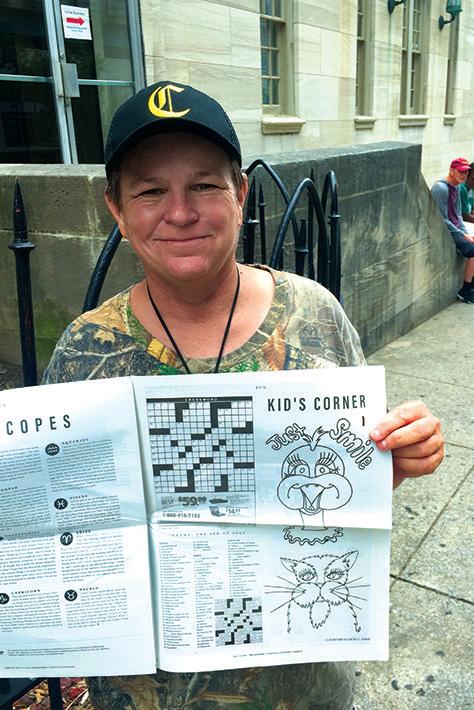







Cynthia P. is the spirit behind the Kid’s Corner section of The Contributor. Her kid-friendly illustrations of animals and seasonal scenes are left blank for coloring. She got started drawing for her own kids.
“I would draw silly pictures for my kids and print a few copies of them so they had something to color. At the time, we couldn’t afford coloring books,” she says.
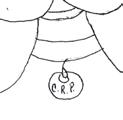



From the age of 18, Cynthia traveled nine months out of the year with carnivals. Her boss took notice of her artistic skills, and she began painting the rides. After 30 years of that lifestyle,
she had to stop working with the carnival in 2017 due to illness.
Cynthia misses getting to see the excitement on the kids faces at the fairs she worked.
“When I worked with the carnival, I enjoyed doing it because even when you smashed your finger, hit your head, dropped something on your foot — as soon as we opened and the lights were on and the kids were at the gate, they were just so excited to be at the fair,” she says. “I feel like getting to color something in an adult paper gives them that same excitement.”
Cynthia has regular customers who are children. One of
them requested the Halloween cat that was in the Oct. 23 issue.


Creating the artwork helps her to keep her stress level down and in turn helps with her hypertension. She hopes coloring her drawings brings that same calmness to children and adults alike.
“Kids, it’s great for them to color because it helps them calm down. But it’s also great for adults that have stressful jobs,” Cynthia says. “Having these pictures in the paper shows kids that there’s people out there that really want them to have a good time and enjoy their day. Because kids go through a lot of stress, too.”

I love when auteur directors confound critics by turning away from signature tropes while still creating films that are unmistakably their own. After creating almost two decades of the surreal and disturbing cinema, David Lynch released The Straight Story in 1999. The Rated G, Disney family film included zero sex, violence or sandworms, but remained unmistakably “Lynchian.” Ditto Quentin Tarantino’s Jackie Brown (1997) which answered critics of the director’s macho, violent films with an iconic female title character and not one frame of on-screen violence. Nowadays, Jackie Brown appears regularly on critics’ lists of the director’s best.
The same can be said of John Waters’ Hairspray (1988). Waters’ purposefully trashy, gross-out, mostly Rated X filmography didn’t prepare fans or haters for this hilarious satire of Baltimore teen culture during the Camelot era. Hairspray features a cast of Waters’ regulars and newbies in a great ensemble performance that manages to be as sincere as it is skewering.
Tracy Turnblad (Ricki Lake) is a plussized teenager who loves to dance. When

she tries out for the local teen dance television program, The Corny Collins Show, her self-assured personality and light-footed steps make her an unexpected celebrity. However, life in Baltimore in 1962 isn’t all dance parties and TV shows, and Tracy and her friends and their families are forced to confront the hard truths of racial segregation in the first decade of rock ‘n’ roll. Following trash-tastic cult classics like Multiple Maniacs (1970) and Pink Flamingos (1972), Hairspray looks like an about-face.
But the movie is pure Waters in its campy mise-en-scène, and in the delight the film takes in its own subversiveness. I imagine Waters himself laughing out loud at some of the hilarious and whack quotables here, and it’s the strength of Waters’ masterful screenplay that gave Hairspray the legs to earn Waters his biggest box office success, a hit Broadway musical, and a 2007 remake of the film.
Hairspray is more than a Kennedy-era Footloose because Waters is able to balance his cornball silliness and satirical sniping against an examination of struggles based on real-life events: Waters’ story was inspired by The Buddy Deane Show — a Baltimore area TV show which pre-empted American Bandstand. In 1963 producers at Baltimore’s WJZ-TV decided to pull the plug on The Buddy Deane Show rather than integrate their teen dancers. Hairspray finds Waters revisiting his own teen experiences with the agency of a talented artist capable of re-writing his own story, and the story of his times.
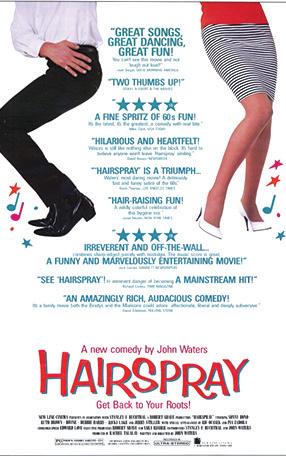
Besides the script, it’s Hairspray ’s cast that makes this movie so memorable. All of Waters’ characters — even the cameos — are distinct and full-blooded, and his actors do them justice with performances that
take-on much of the heavy-lifting of establishing Hairspray ’s tightrope tone between social drama and teen musical send-up.
Debbie Harry and Sonny Bono tear into the screen here as the wealthy, demanding parents of Tracy’s teen queen nemesis, and Waters regular, Divine is unforgettable as Tracy’s overbearing mother. Ricki Lake is a revelation as Tracy — the movie was Lake’s first film, and it’s surely one of the most remarkable actor debuts of the 1980s. Tracy is in almost every scene of the film, and Hairspray doesn’t work if Tracy isn’t simultaneously vulnerable, assured, outspoken, kind and a half wild teenage girl all at the same time. Tracy is a big role in every sense and Lake makes it look easy while dancing her shoes off at the same time.
Hairspray screens as part of the Belcourt Theatre’s Music City Monday roster on Nov. 11. Go to www. belcourt.org for times and tickets.
Joe Nolan is a critic, columnist and performing singer/ songwriter based in East Nashville. Find out more about his projects at www.joenolan.com.
















Recently Nashville had a quick and effective call to action to ensure cold weather shelters for this winter. It was a community call to compassion. It was a call to humanity. But was it necessary?

Cold weather shelters save lives during the night. Also, no one should be outside in the cold. But is a cold-weather shelter necessary? Well, in general, it depends. In Nashville, yes. Cold weather shelters are a regular sign of warm weather failure. You do not argue about kindness, compassion and humanity when it is freezing outside, you simply love your neighbor in the warmth.
But where does that compassion go when everyone is awake in the dawn of a new day and walk out into the crisp air of despair? The same day living the same way as the last year with the same risk of chronic homelessness that reduces life expectancy by 25 years?
Maybe there is a lesson from the Nashville Flood.
When Nashville flooded, nearly 10 years ago, there was a determination that Nashville would not be like other cities that struggled with both response and recovery. Namely, Nashville determined to respond better than the response to Katrina.
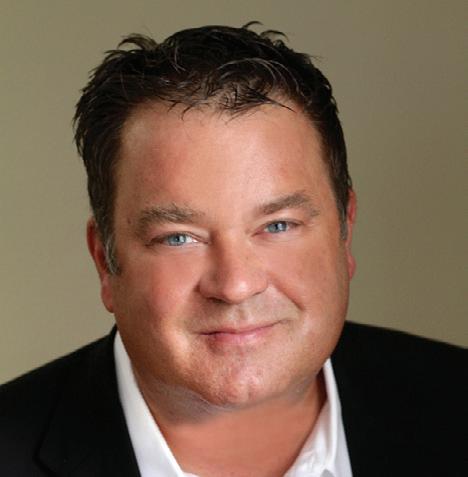
I had the privilege of serving in the immediate aftermath of Katrina in Biloxi and the long-term recovery of Katrina in New Orleans. During these years of heartbreaking service, research and professional development, we determined that we must learn in order to lead better
responses. Hurting humanity demanded it. Our team’s passion to advanced resilience created opportunity from the responsibility to build back better, stronger, and more effective service delivery systems.


























The challenge caused us to look at fast disasters, like hurricanes and floods, and slow disasters, like homelessness and changing climate patterns. Simply, how could we use current resources to invest in greater responses through intentional knowledge transfer from previous experiences, professional networks, proven frameworks, and modern delivery systems? We know the most effective use of money is to reduce future risks.
This is both the risk and opportunity of cold weather shelters. The risk is some use cold weather shelters as a seasonal escape from not choosing the current shelter paths to housing. Some shelters’ attendance decreases as cold weather shelters open. Too often cold weather shelters make moderate climates more tolerable and thus remove the urgency to take part in the too difficult housing processes. And so, homelessness is extended, often becoming chronic, too often ending in early death. A slow disaster for the city, a final disaster for our neighbors.

Could we use a cold-weather shelter to advance resilience? Absolutely.
What if we meet every person entering for the night with the hope of experiencing a new morning? We must determine what are the barriers to using the current





sheltering system or entering the limited paths to housing. Capturing the stories of those socially displaced by disasters, fast or slow, allow for the best solutions to be revealed.
What if we determined the number of persons that enter the first night, but will not enter the last? Choose your passion population; veterans, seniors, families, youth, LGBTQ, people with pets. Connect with one of the many non-profits serving in these sectors. Support them with time, resources, prayer and compassion. Strengthen their housing resources. Hold us all accountable.
Let us advance resilience by 1) Reducing the Sludge of Recovery and 2) Creating Inclusive Communities 3) Securing Safe Paths to Restoration.


Maybe this is our issue to once again proclaim, “ We are Nashville! ”





Major Ethan Frizzell serves as the Area Commander of The Salvation Army. The Salvation Army has been serving in Middle TN since 1890. A graduate of Harvard Kennedy School, his focus is the syzygy of the community culture, the systems of service, and the lived experience of our neighbors. He uses creative abrasion to rub people just the wrong way so that an offense may cause interaction and then together we can create behaviorally designed solutions to nudge progress. Simply, negotiating the future for progress that he defines as Quality of Life in Jesus!


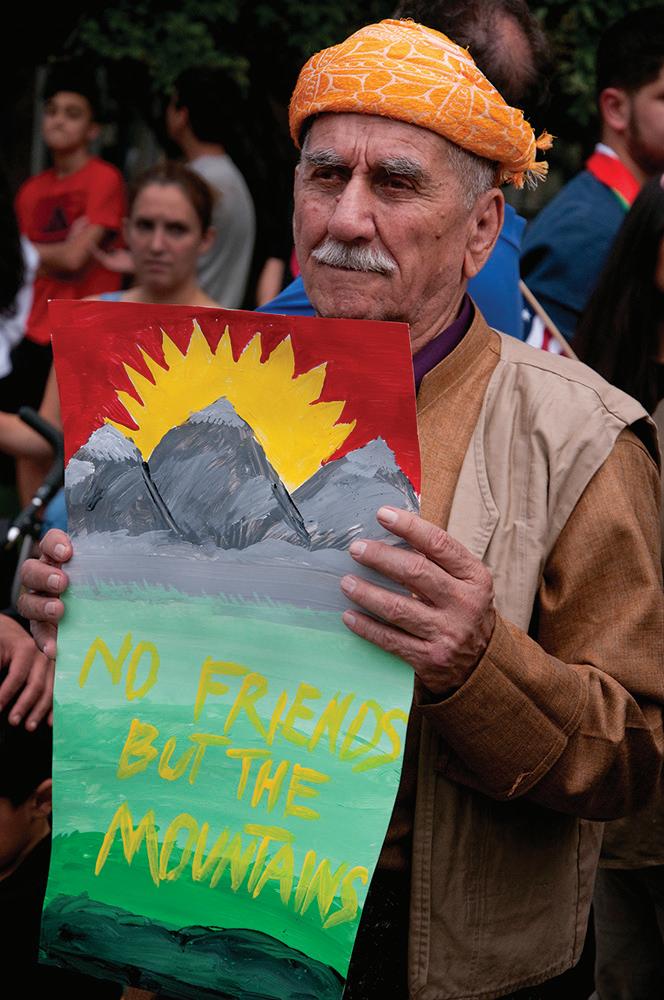

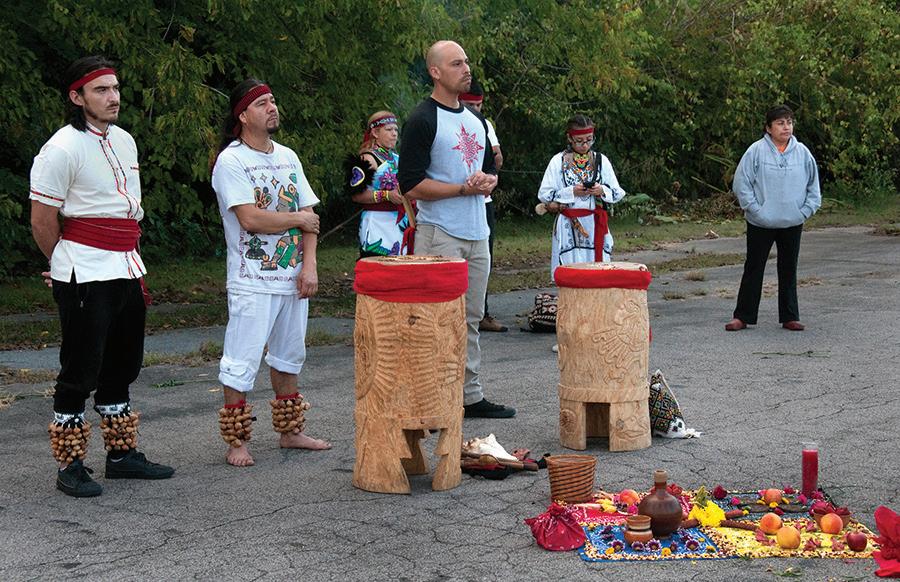
 PHOTOS BY ALVINE
PHOTOS BY ALVINE
There’s a call you know is coming Though you hope it never comes There’s a numbness in the waiting For his tale of martyrdom
He was young and wild and carefree When the poison hit a vein Its talons seized him by the throat And commandeered his brain
His family rushed to free him From the clutches of his bane They lavished him with love and care All efforts were in vain
There’s a call you know is coming Though you pray it never will There’s a fear down deep inside you That no faith alone can quell
He fought the beast for many years It was a battle to the death And in the end he cursed it As it took his last, low breath
His broken-hearted father Isn’t fooled the beast is gone He knows that while his son is free The beast has just moved on
There’s a call you know is coming Though you hope it never comes There’s a numbness in the waiting For his tale of martyrdom
To help the amount of paper sales, and to help diminish the amount of cardboard signs, people should be able to write on T-shirts, what the profits go toward.
Under the clouds
I was struck by a rainbow
Traveled through time Where did yesterday go? I was down on the floor Looking up My shoes were untied I tripped and lost my cup Someone looked down on me
Allergic to gravity
And all around There was the sound Of angels singing in a band
There I knew there was truly The promised land
WILD BILL
Sitting in a dark room
Rain is coming down The demons at my door They always come around
Every day and every night Reality grins an evil grin ’Cause they know that I ain’t right
Lookin into my dreams
And all the things as such I pinch myself just to see I didn’t hurt—not very much
In the morning I’ll go walking
To hear the wind inside my head A friend just stopped and smiled at me— “I heard that you were dead!”
GARY E.
What to do when I find an angel? Make sure to to treasure her or him.
The Contributor has been an angel for me that I plan to keep.
People say thanks all the the time, but what are you thankful for today?
I know my Father is proud of my ways Even after all these days Though after all these years He may not be here But sees that I am sincere It has been a while It still makes me smile To know he still looks down on me And sees I’m not where I used to be Thank you Father for being true And teaching me what I need to do
MICHAEL W.
Too old & tired to work
Too fat & ugly to dance So therefore I don’t Really stand a chance But today is my birthday And on this day all i Ask of you is an ice Cold Brew.
What does it mean to be “thankful?” Well, Scorpio, the modern English word “thank” comes from the the ancient European word “tong.” Not like “I would be more thankful if you would use the tongs to put a roll next to my mashed potatoes.” Tong was a word that meant “think.” So that common expression of gratitude “thank you” essentially meant “I will think of you” or “I will remember.” Thankfulness is not just a passing moment of appreciation for help that you’ve received or goodness that you may have stumbled into. It means that you will do your best to hold that gratitude in your mind. So as you pass through this season of thanksgiving, don’t just be thankful in your words, stay thankful in your thoughts as well.
I think it’s between you and David Spathaky, Sagittarius. Mr. Spathaky, as you probably know, holds the world record for simultaneous plate spinning. He kept 108 of those little suckers whirling on sticks all at the same time. But you, friend, you’re definitely a close second. You’ve always got a lot going on, but lately I think you might want to call the people at the Guinness Book. While I’m certainly impressed at everything you’re doing, I’m starting to wonder if you might want to let a few of those plates fall. I don’t want to be a downer, but I don’t see how you can keep this up for much longer. David Spathaky only had to keep his spinning for a few seconds. If you don’t start focusing on the important plates and let the less important ones fall off their little posts, I’m afraid you may lose some of the ones you value most.
Every year the president of the United States, with all of his executive might, pardons just one turkey. More than 45 million turkeys end up on Thanksgiving tables but one very special turkey wins a trip to meet the president and then lives out the rest of its natural days on a farm. So, if you’re a turkey, the odds of success are pretty slim. If you’re the Capricorn reading this paper, however, the odds are on your side. In fact, regardless of any astrological indicators, I would say that you will most likely not be packaged, cooked or in any way served on a dinner table this Thanksgiving. Isn’t that something worth being thankful for?
Sure is dark out there, Aquarius. Couldn’t be much past 5 p.m., but I can’t see a thing. When the days start getting so short, even waking hours feel diminished. You wake up, go to work, come home, go to bed, repeat. It’s dawn when you leave, dusk when you return, and fluorescent in between. The rhythms of the day feel somehow muted but the beats just get closer together. The only way to defeat these short, tight days is to dig in to these long, loose nights. Turn off the TV and turn on a lamp. Read a book. Light a fire in the fireplace and make some hot chocolate. Go out back and look up at the sky. Watch your breath turn to mist under the porch light. Start a project that will keep you awake until 2 a.m. Just because it’s dark, doesn’t mean you have to lie down.
When quantum physicists talk about “the problem of time,” they mean that time is an intrinsic part of our ideas about gravity, cosmology and quantum theory and yet there’s no way to prove that time actually exists. When I talk about “the problem of time” I mean that no matter when I leave the house, I always seem to be 10 minutes late. But there’s another problem with time: It just keeps going by. We hurtle through it every day. No matter how much we talk about it, debate it’s existence, or try to beat it to the Vietnamese restaurant before they close at 9 p.m., we just can’t get ahead of the thing. So I think you and me and all the quantum physicists need to get together soon and just surrender to the moment. Because the only way we’re ever going to get over all our problems with time, is just to lean back and just experience it. Eventually the waves of time will wash over all of our theories and problems and missed opportunities for pho. Why not let eventually start today.
Evergreen trees stay green all year. Deciduous trees are the ones that lose all their leaves when the weather gets cold. They drop their leaves to conserve water and energy during the harsher conditions of winter. Nobody faults a maple tree for dropping all its leaves when the days get shorter and less sunny. You don’t see people criticize elms and ashes for standing around doing nothing all winter. So maybe you and me can try to be a little more deciduous this year, Aries. You worked hard all summer grow-
ing all those branches and photosynthesizing and whatever else it is you do. Don’t be afraid to slow down this season, drop some of those heavy leaves, and take some time for yourself.
I just saw this amazing list online that made me think of you, Taurus. It was the perfect thing to answer the deepest questions of your heart and solve your most difficult problems. Lemme see it was … I think it was “Fourteen signs you need more gluten.” No wait, it was “Nine fashion habits you never knew were holding you back.” Or was it “Sixteen things you’ll wish you didn’t know about Peter Saarsgard?” No, that was for Capricorn. Okay, I’m pretty sure yours was “Forty-two koalas that are having a way worse day than you.” Wait … this is frustrating—it was absolutely perfect for you, I swear. Here’s what you should do: every time you see a list on the Internet, read it. Read all the lists and when you find the one that resolves all the painful mysteries of your life, you can stop. Start with “Eight great ways to waste time and feel terrible.”
So to start, everybody needs to put in one coin (as always, chocolate coins are acceptable). Now, spin the dreidel. If it comes up “Nun,” nothing happens. If it lands showing “gimel” you get all the coins. If it’s “hei” you get half the pot. And if it comes up “shin” you have to put another coin in. So, now that you know the rules you have no excuse not to play. If you don’t have any coins on you, I can spot you a couple of M&Ms just to get you in the game. After all, it’s not really important who wins this thing. It’s just important that we all spend some time together on the floor laughing and eating chocolate and hoping everything will keep coming up gimel for the whole lot of us.
I have heard it said that the most important thing you can know is your own story. But what if your story is something simple? What if your story is just “The Three Little Pigs?” I mean, it’s a great story. It has danger, intrigue, huffing and puffing. It’s just kind of basic. I mean, sure, everybody wants a big complicated story like War and Peace or something. But if your story is just “The Three Little Pigs,” you should still get out there and tell that story. Even if every-
body thinks they’ve already heard it, there’s still a lot to learn. I like the part with the house made of straw. Tell that part again.
Every year we go around the table and we say what we’re most thankful for. Then we eat until we couldn’t possibly be thankful anymore— and thus begins our dark metamorphosis. In our tryptophan cocoons we transform from caterpillars of gratitude into butterflies of absolute need. Our ungrateful wings carry us to the malls and megastores where we swarm the aisles looking for the blackest of Black Friday deals. We honk through packed parking garages with wanton greed frothing from our unquenched mandibles and then claw the final shopping cart away from weaker members of our brood. At least, that’s how we usually do things in the Mysterio household. Maybe we should try to cool it down a little bit this year. I don’t know. We could just sleep-in. Maybe you can come over in the afternoon and we’ll eat some cold turkey and watch Alf reruns. That would probably be better.
It works in theory, Virgo. That’s why we still put the marshmallows on top of the sweet potatoes, even though they catch on fire in the oven nine times out of 10. It works in theory—but even when it does work, it’s only pretty good. So if it only works in theory, why not try something entirely new? Maybe just butter and brown sugar. Maybe cumin and black pepper. Maybe just forget the sweet potatoes altogether and bake up some mini pizza-bagels. Traditions are great and I’m sure perfectly browned marshmallows on a bed of mashed sweet potatoes are a sight to behold. But if it’s not working out for you, it’s time to try something new.
So you got a new look. Came up with a new name. You even rented a few billboards around town to let everybody know about the new you and how much better things are going to be from now on. And that’s great, Libra. Really. If that’s who you want to be, I fully support it. But, if it’s not . . . If you’d rather just be the old you, we’d be glad to have you back. So maybe you could just throw on a T-shirt, put down the keytar, take off the sunglasses and we could get together for a burger or something.
Mr. Mysterio is not a licensed astrologer, a certified pilgrim impersonator, or a trained turkey talk-line operator. Need some advice? You can email any question to Mr. Mysterio at mrmysterio@thecontributor.org or ask on Twitter at twitter.com/mrmysterio. Look for answers to your questions next issue. This set of Hoboscopes first ran in November of 2013.
















It was the last campground of the season — Seven Points, space 25. From that spot, you can see the beautiful sunsets and peaceful waves rolling upon the lake. It was the first space my son Paul and I ever backed into when we got the RV two years ago. This spot is occupied most of the time so when I saw it was available for four nights I jumped on it. It would be a time to work on the RV with the slides out making it accessible to fully clean and get ready for winter; adding blankets to the bed and putting away our summer clothes.
That morning I did the usual. I let out my dog Faith and made a cup of coffee while enjoying the quiet of the morning before too much activity began. Faith started barking so I knew she was stuck and outside and I went to bring her in. I’m still figuring out what I can do and what I can’t do by myself physically, but this time I was able to let her back in without help.
A couple hours later my cell phone rang. I didn’t recognize the number, but for some reason I answered it — a very rare









occurrence. I said, “Hello,” and all I really remember is hearing the words, “Hadley Park” and “affordable housing.” I couldn’t speak. I couldn’t breath or even think. Hadley Park is a Metropolitan Development and Housing Agency (MDHA) property in Nashville. I kept thinking, this is the call. I asked the woman on the other end of the phone to hold on a minute because I wanted to write everything down so I wouldn’t forget a thing. After compiling a list of notes, we hung up and I was just in shock. I filled out those MDHA applications for affordable housing at Hadley Park seven months ago. I heard nothing by phone or email and eventually I forgot about them. I figured that when and if my disability came in, then it would be easier to get into one of the older housing communities.
The weekend dragged on and my mind was spinning with so many “what ifs.” Tears of joy streamed down my face that maybe this time it’s my turn. I channeled that energy into focusing on what I needed for the interview. I found every document they needed from my birth certificate to a copy
of my social security card. Many homeless people lose documents and can have trouble replacing them, but I was lucky to have all of mine tucked away in a clear plastic file case.
I wasn’t sure how to navigate AccessRide with having to stop to pick up letters from Neighborhood Health about my disability, but a dear friend stepped in to give me a ride there and back. This was really going to happen! I was going to start the process of getting into housing. I spent all weekend thinking about having a home without wheels. Monday finally came and I went in and started the paperwork. The process of it being my turn. Hearing others who had obtained housing was always bittersweet. The joy of a homeless person getting into housing while you’re still left without can cause a turmoil of feelings, but the joy of those finding housing always wins out.
I’m looking forward to being part of the housed community. I can take Faith to the nearby park, and there’s a library right next door. It couldn’t be more perfect for me — for us.


 BY JOHN H., CONTRIBUTOR VENDOR
BY JOHN H., CONTRIBUTOR VENDOR








Dear Julie,
BY JULIE B., CONTRIBUTOR VENDOR





I could use some advice. When I was out of town, my psychobilly roommate went into my room and used my stereo without my permission. He played his Mac DeMarco CD so loud that my speakers blew out! My roommate says he won’t pay to repair them unless I can prove they weren’t already broken. What should I do?




Signed, Freakin Frownin in Nashville

This is what I would do. Check the door to see if it has been broken into. Then take a picture of it. Then you want to look at the speakers and take a picture of them. Then tell your roommate he has two options: He can go to jail for destruction of property, or he can pay for the speakers and avoid jail and court. Or there’s
a third option, you can kick him out of the apartment or the house, and then get a dead bolt and a padlock for your door. I have had this happen to me before, and I put them in jail. We trust the people we live with not to break things but some people just don’t listen. They think everything is theirs. But when you break the law you go to jail. It is a felony to break in to somebody’s personal space. Sometimes you have to kick in a few doors to get some action. You might lose a friend, but you have to do the right thing and turn your roommate into the cops.
I was trying to beat the red light so I couldn’t stop. I don’t carry cash. These people are not gonna listen to me. Not feeling well. Too hot outside, maybe tomorrow. These are all excuses, but when it comes to God’s word, excuses should be avoided. Nothing can get in the way or stop me. Have you ever gone to work with a headache or when you weren’t feeling well? Things such as these are common, but we must not let it get us down. Give it to God. You’d be surprised.
I remember when I was a kid I used to play sick to stay at home with Mom on Sunday mornings. It was a good thing. To hear my mom sing while cooking and doing chores was a blessing. I tried many times to get her to go audition for records, but it never worked. When she went to church, people from everywhere came just to hear her sing.

We as Christians shouldn’t make excuses when God wants us to carry out a plan. What if you traveled to little countries where it was against the law to share God’s word? I was reading a book written by David Platt. Christians who would go to foreign countries to spread and teach the Gospel risk their life knowing if they were to get caught they would die. And here we are in America riding by our Christian brothers and sisters and won’t ever say hello. I’m sorry about what America has taught but if we, as Christians, want to spend eternity with Christ, we have to have the heart of Christ.


Are you in a tricky situation and need some advice? Julie is here to answer questions and give her take on a situation. Email editorial@thecontributor.org and it could end up in a future issue of The Contributor.






You know Moses tried making excuses when God asked him to go free the slaves from Egypt. God didn’t accept his excuses. Sometimes I wish it was like that with me because sometimes I make excuses, too. Jonah tried everything he could to get out of doing what God asked of him. He even tried to go the other way. But with God you can’t run or hide. In the future if God speaks to your heart, “Just do it.”







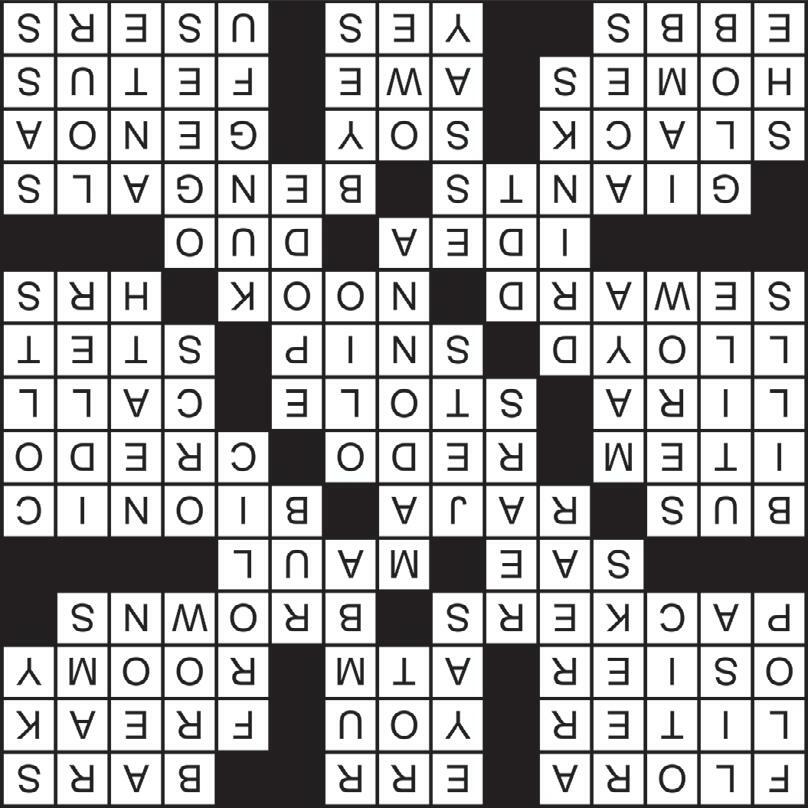





Special preview at DPC Waffle Shop: Dec. 5 from 11 a.m. - 1 p.m.









thanks to our sponsors:




 BY DAVID "CLINECASSO" C.
BY DAVID "CLINECASSO" C.
Downtown Presbyterian Church
